 |
 |
 |
| |
Long-term follow-up of HCV resistance-associated substitutions after DAA treatment failure
|
| |
| |
EASL 2022 June 22-26 London
Julia Dietz1, Beat Müllhaupt2, Peter Buggisch3, Christiana Graf1, Kai-Henrik Peiffer1, Katrin Matschenz3 Jörn M. Schattenberg4, Stefan Mauss5, Christoph Antoni6, Elena Durmashkina7, Claus Niederau8, Thomas Discher9, Janina Trauth9, Georg Dultz1, Julian Schulze zur Wiesch10, Felix Piecha10, Hartwig Klinker11, Tobias Müller12, Christoph Neumann-Haefelin13, Thomas Berg14, Christoph P. Berg15, Stefan Zeuzem1, Christoph Sarrazin1,7
1Department of Internal Medicine I, Goethe University Hospital, Frankfurt; 2University Hospital Zürich, Switzerland; 3nstitute for Interdisciplinary Medicine IFI, Hamburg, Germany, 4University Medical Center Mainz, 5Center for HIV and Hepatogastroenterology, Düsseldorf, 6University Hospital Mannheim, 7St. Josefs-Hospital, Wiesbaden, 8Katholisches Klinikum Oberhausen, 9Justus Liebig University Gießen, 10University Medical Center Hamburg-Eppendorf, 11University Hospital Würzburg, 12Charité Universitätsmedizin Berlin, 13University Hospital Freiburg, 14University Hospital Leipzig, 15University Hospital Tübingen, Germany
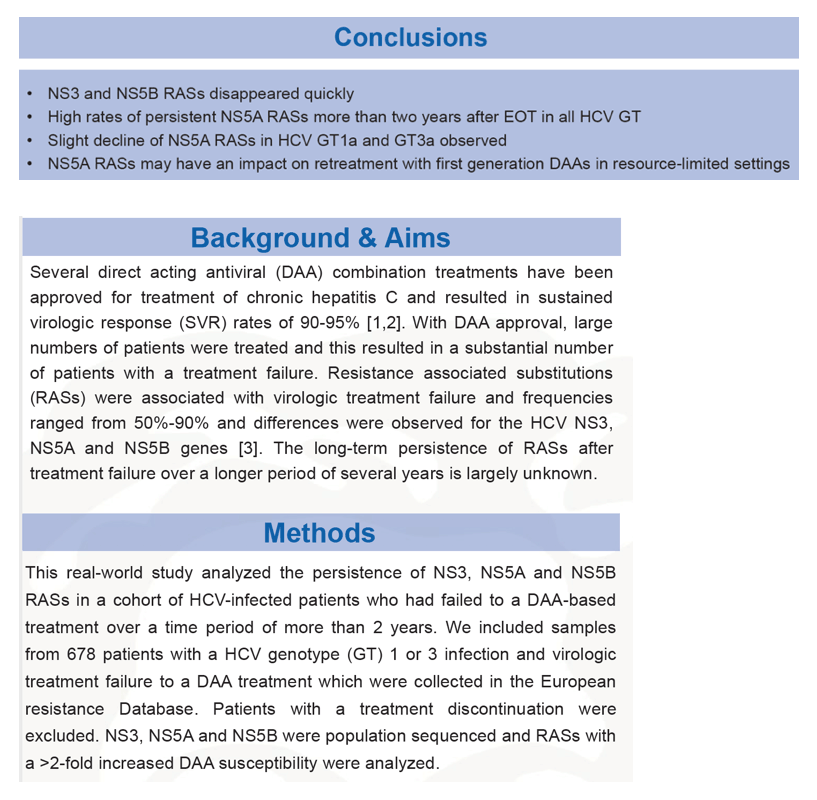
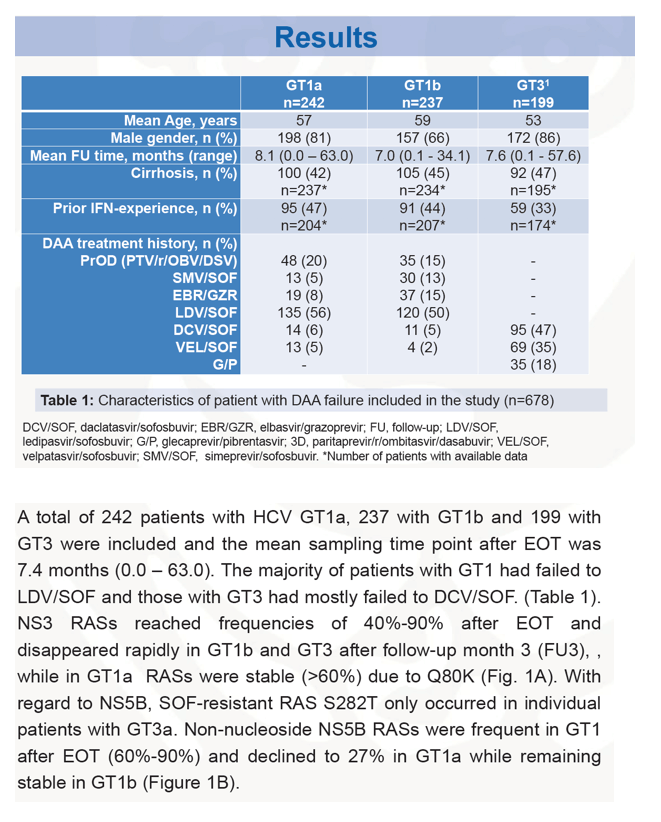
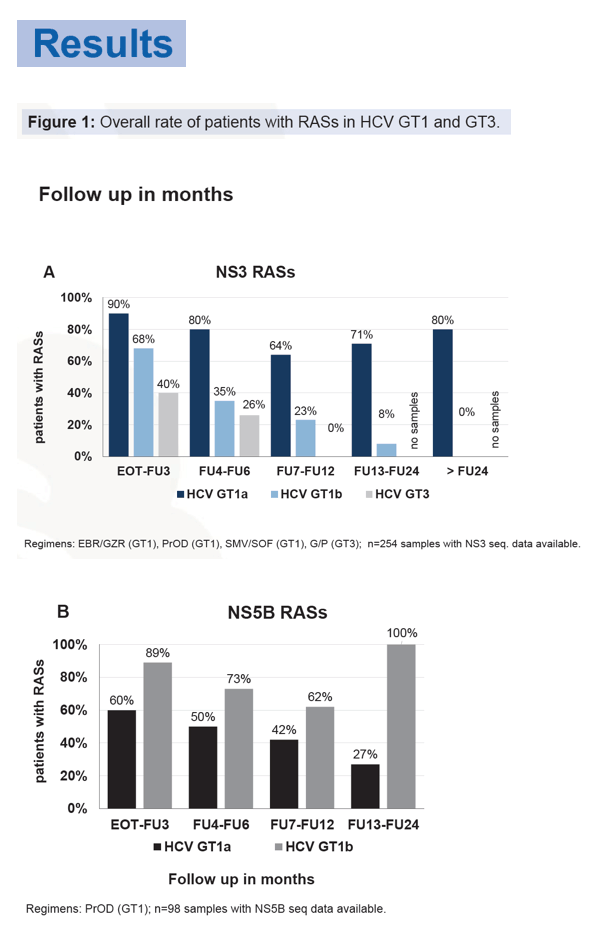
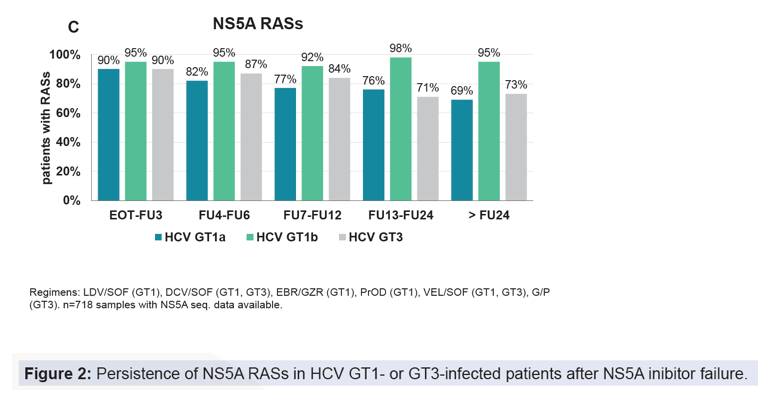
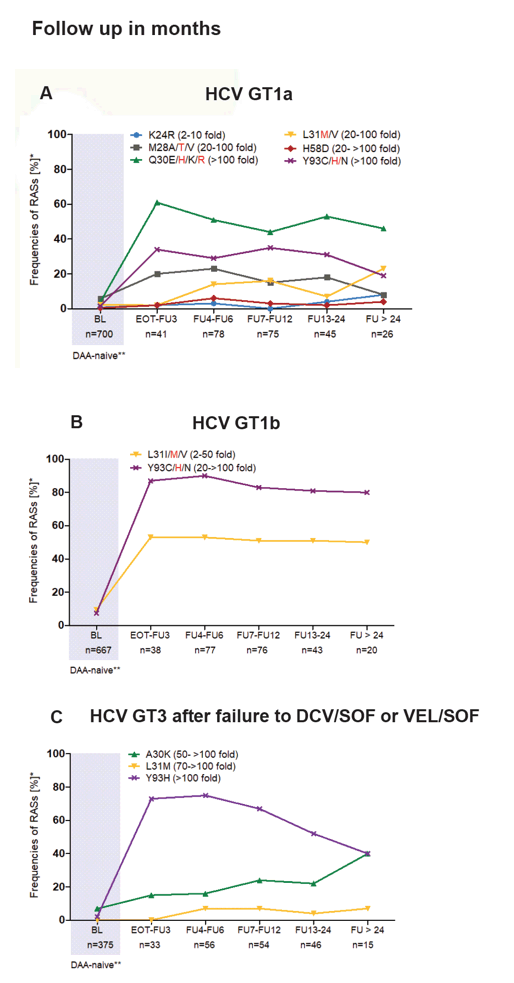

BL, baseline; EOT, end of treatment; FU, follow up. Major RASs are labeled in red, EC50 fold change values in parentheses; EOT: end of treatment; FU: follow-up in months. **Natural frequency of RASs in DAA-naïve patients published in Dietz et al. 2018. *Double variants calculated as single RASs. Thus, sums of single RAS frequencies is not identical with rate of patients with RASs.
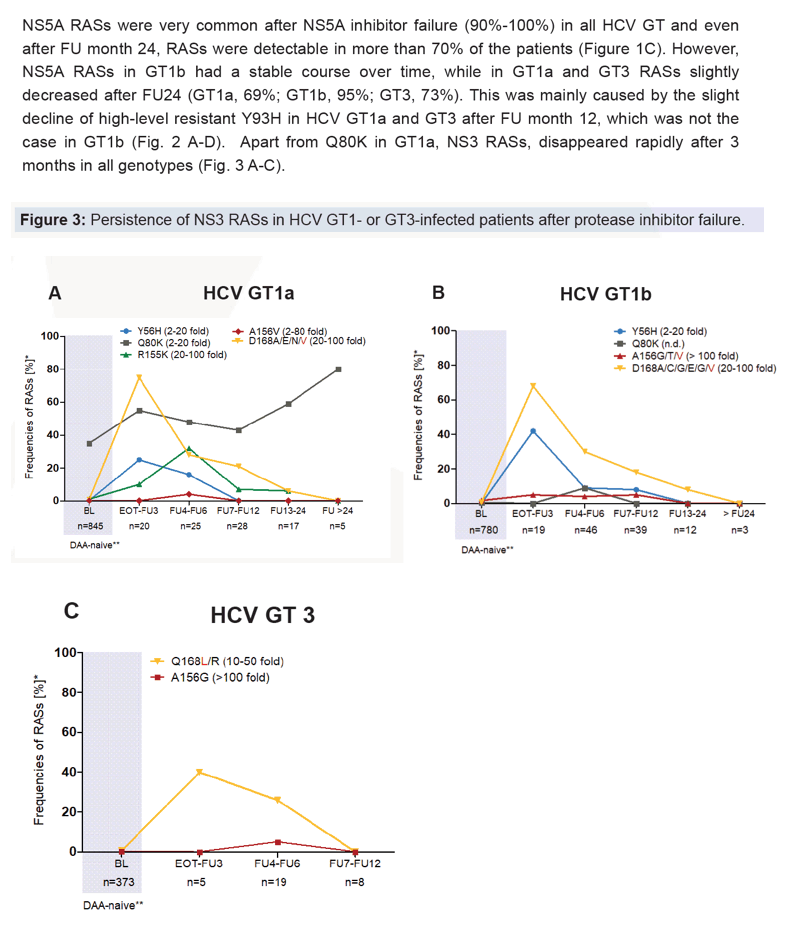
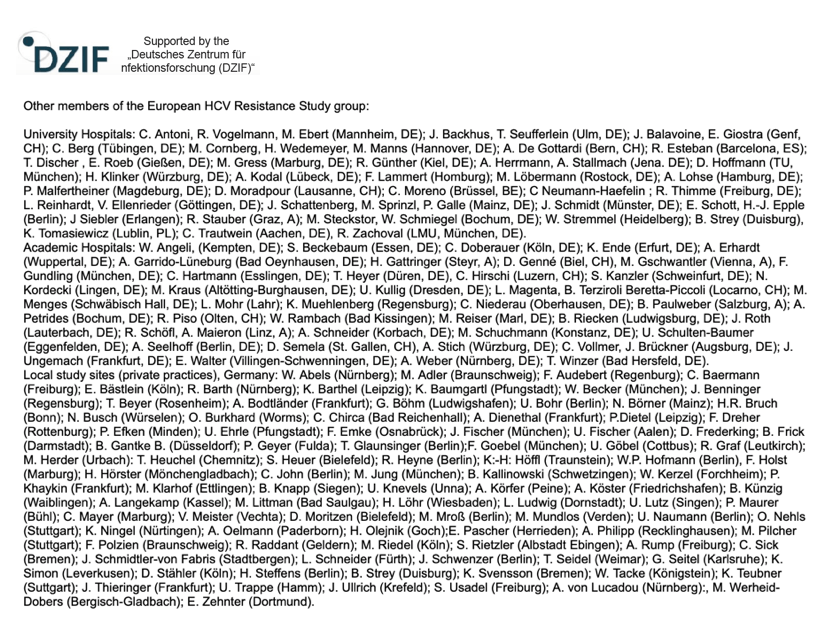
|
| |
|
 |
 |
|
|